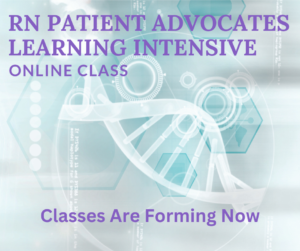Breast cancer screening. So much conflicting news, so many options, what is the best approach for you?
Medical science is constantly evolving – hence the conflicting news. Let’s look more closely:
 Mammograms are a valuable – though not the only valuable – tool used for breast screening. Martha Grout, MD, explains that “Mammography has been the state-of-the-art screening test for several decades. However, considerable controversy remains regarding its value, particularly in women under the age of 50. Results from the widely accepted BCDDP study documented that the overall ability of mammograms to detect cancer was only 70 percent. This means that 30 percent of mammograms found to be negative for potentially cancerous lesions are actually positive. Only one biopsy in six was found to be positive for cancer when done on the basis of a positive mammogram or breast examination. The combined false positive rate was determined to be as high as 89 percent.
Mammograms are a valuable – though not the only valuable – tool used for breast screening. Martha Grout, MD, explains that “Mammography has been the state-of-the-art screening test for several decades. However, considerable controversy remains regarding its value, particularly in women under the age of 50. Results from the widely accepted BCDDP study documented that the overall ability of mammograms to detect cancer was only 70 percent. This means that 30 percent of mammograms found to be negative for potentially cancerous lesions are actually positive. Only one biopsy in six was found to be positive for cancer when done on the basis of a positive mammogram or breast examination. The combined false positive rate was determined to be as high as 89 percent.
So, what else should you consider in addition? There is genetic testing for the BRCA genes that indicate a predisposition to breast cancer, MRIs, ultrasounds, PET scans – all of which cost a great deal and have demonstrated limitations.
 Then, there is breast thermography. Breast thermography measures heat emissions from breast tissue (cancer creates heat) and identifies changes in breast tissue. Dr. Grout: “At least five important studies published between 1980 and 2003 document that breast thermal imaging is a major advancement in identifying breast cancers not only with greater sensitivity and specificity, but also years earlier than with any other scientifically tested medical technology.”
Then, there is breast thermography. Breast thermography measures heat emissions from breast tissue (cancer creates heat) and identifies changes in breast tissue. Dr. Grout: “At least five important studies published between 1980 and 2003 document that breast thermal imaging is a major advancement in identifying breast cancers not only with greater sensitivity and specificity, but also years earlier than with any other scientifically tested medical technology.”
Which combination of testing is right for you? Like to know more? Read on . . .
Compare mammography and breast thermography here. . .
Medical science is constantly evolving – hence the conflicting news. Let’s look more closely:
 Mammograms are a valuable – though not the only valuable – tool used for breast screening. Martha Grout, MD, explains that “Mammography has been the state-of-the-art screening test for several decades. However, considerable controversy remains regarding its value, particularly in women under the age of 50. Results from the widely accepted BCDDP study documented that the overall ability of mammograms to detect cancer was only 70 percent. This means that 30 percent of mammograms found to be negative for potentially cancerous lesions are actually positive. Only one biopsy in six was found to be positive for cancer when done on the basis of a positive mammogram or breast examination. The combined false positive rate was determined to be as high as 89 percent.
Mammograms are a valuable – though not the only valuable – tool used for breast screening. Martha Grout, MD, explains that “Mammography has been the state-of-the-art screening test for several decades. However, considerable controversy remains regarding its value, particularly in women under the age of 50. Results from the widely accepted BCDDP study documented that the overall ability of mammograms to detect cancer was only 70 percent. This means that 30 percent of mammograms found to be negative for potentially cancerous lesions are actually positive. Only one biopsy in six was found to be positive for cancer when done on the basis of a positive mammogram or breast examination. The combined false positive rate was determined to be as high as 89 percent.
So, what else should you consider in addition? There is genetic testing for the BRCA genes that indicate a predisposition to breast cancer, MRIs, ultrasounds, PET scans – all of which cost a great deal and have demonstrated limitations.
 Then, there is breast thermography. Breast thermography measures heat emissions from breast tissue (cancer creates heat) and identifies changes in breast tissue. Dr. Grout: “At least five important studies published between 1980 and 2003 document that breast thermal imaging is a major advancement in identifying breast cancers not only with greater sensitivity and specificity, but also years earlier than with any other scientifically tested medical technology.”
Then, there is breast thermography. Breast thermography measures heat emissions from breast tissue (cancer creates heat) and identifies changes in breast tissue. Dr. Grout: “At least five important studies published between 1980 and 2003 document that breast thermal imaging is a major advancement in identifying breast cancers not only with greater sensitivity and specificity, but also years earlier than with any other scientifically tested medical technology.”
Which combination of testing is right for you? Like to know more? Read on . . .
Compare mammography and breast thermography here. . .





Recent Comments